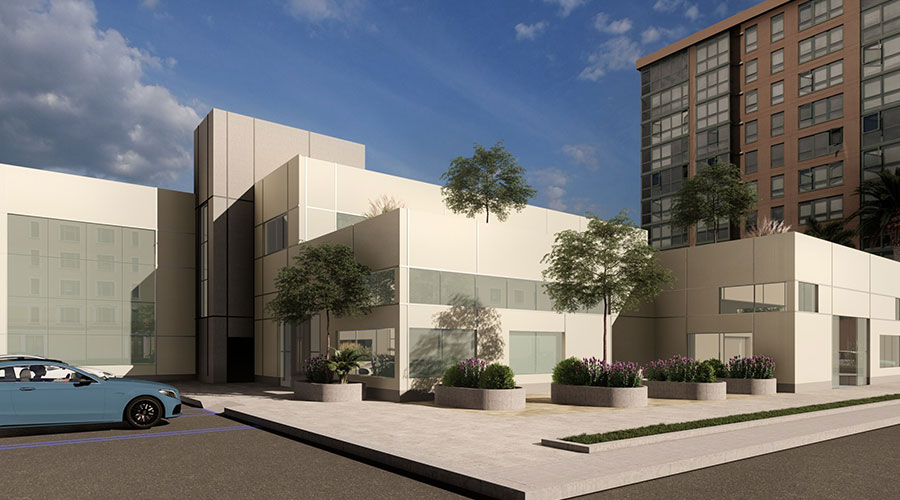Recent developments in factory-assembled cooling tower technology can increase cooling capacity per cell by up to 50 percent, expanding the applications for so called “package” towers supporting HVAC and industrial processes. Although field-erected towers have long been the preferred product for process cooling in power plants and heavy industry, new robust designs and materials coupled with cost-saving building techniques now make a new generation of modular products logical alternatives for a broader range of applications.
For example, an advanced design factory-assembled cooling tower can be delivered with 60 percent shorter lead time and installed in about 20 percent of the time it would take to build a traditional field-erected cooling tower. With no costly concrete basin construction required, simplified piping and electrical wiring, and more flexible site placement, the cost benefits of advanced factory-assembled towers become clearer.
Reducing energy and installation costs for HVAC applications
In HVAC applications, energy efficiency is a major driver for end users, who are increasingly focused on building system technologies that reduce energy consumption. A new cooling tower designed specifically to address energy efficiency is the Marley® NC Everest™, a factory-assembled crossflow design manufactured by SPX Cooling Technologies, Inc. that offers up to 50 percent more cooling capacity per cell and uses up to 35 percent less fan power per ton of cooling.*
In addition to lower energy costs, this new tower design also significantly reduces HVAC system installation costs. The increased cooling capacity per cell means fewer cells, less piping and fewer electrical connections are required, saving labor and material costs.
Reducing field-erection costs for power and heavy industrial applications
A major concern for large power and heavy industrial projects is the cost of cooling tower construction. Tower components are typically shipped to the site over a period of weeks, as the building process advances. It can take 20 weeks or more for components on a typical field-erected project to arrive on site. The process involves large labor forces and expansive staging areas, which contribute to high construction costs. Complex industrial projects also heighten health and safety concerns and weather issues can impact completion.
Alternately, pre-assembled cooling tower modules are built in a controlled factory environment and shipped in 6-8 weeks. The modules are assembled on site in about 20 percent of the time required for a field-erected tower. The modular design and field assembly process reduce onsite labor, work duration, and staging area requirements and contribute to a safer work environment.
The shorter delivery and construction times of a pre-assembled tower offer power and industrial customers a distinct advantage because meeting capacity requirements and managing downtime and outages are of critical concern to their operations.
For example, a recent construction estimate to replace a field-erected cooling tower in the southeast United States required 4500 hours and 7 weeks of field labor. When a modular pre-assembled tower, such as the NC Everest, was specified, installation duration was reduced to less than 2 weeks – an enormous savings in time as well as plant operational efficiency. And the plant’s additional costs for temporary cooling were eliminated.
Building a field-erected cooling tower requires construction of a foundation in the form of a concrete cold water basin. The cost of this basin alone typically adds 40% to the tower construction costs. A factory-assembled tower, such as the NC Everest, includes an integral basin which eliminates this additional construction cost. The basin is assembled and leak-tested in the factory.
Onsite testing of field-erected towers is often required to verify they meet the specified cooling capacity. Conducted by independent third-party agencies, the tests typically cost about $25,000. These additional expenses are eliminated with factory-assembled towers which are certified by the Cooling Technology Institute to meet thermal performance as specified.
Design advantages of new cooling tower design
The new Marley NC Everest Cooling Tower is constructed of heavy mill galvanized or stainless steel and engineered to withstand the demands of both HVAC and heavy industrial applications. It utilizes advanced MarKey™ drift eliminators which achieve the lowest measurable drift rate, down to 0.0005% of circulating water flow, so less water escapes the tower.* In addition, convenience features make inspections and maintenance less complicated and safer. These include seven-foot high access doors and an expansive interior with service decks.
Cooling towers are typically designed to meet summer cooling demand. The crossflow design of the pre-assembled NC Everest permits “variable flow” operation, to reduce water flow rate and energy consumption during cooler months. By contrast, the counterflow design of many field-erected towers does not readily allow changes in flow rate. Crossflow design also inherently shields cold water basins from sun exposure, discouraging algae growth. In cold weather, crossflow design helps prevent high winds from causing water escape, which can lead to icing and safety concerns.
Whether designing a new cooling system or replacing an aging traditional cooling tower, this new crossflow pre-assembled cooling tower design merits careful consideration for HVAC, power generation and heavy industrial cooling applications.
*Compared to other factory-assembled single-cell cooling towers
Scott Maurer is global product manager for factory-assembled products at SPX Cooling Technologies, Inc. in Overland Park, Kan.

 UF Health Hospitals Rely on Green Globes to Realize Their Full Potential
UF Health Hospitals Rely on Green Globes to Realize Their Full Potential How Healthcare Facilities Can Be Truly Disaster-Resilient
How Healthcare Facilities Can Be Truly Disaster-Resilient TriasMD Breaks Ground on DISC Surgery Center for San Fernando Valley
TriasMD Breaks Ground on DISC Surgery Center for San Fernando Valley Bigfork Valley Hospital Falls Victim to Data Breach
Bigfork Valley Hospital Falls Victim to Data Breach AI-Driven Facilities: Strategic Planning and Cost Management
AI-Driven Facilities: Strategic Planning and Cost Management